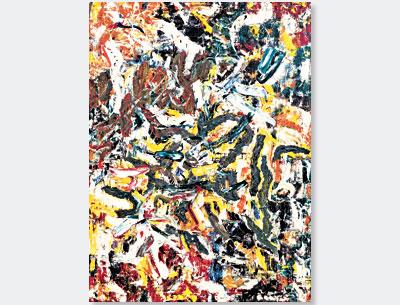Richenburg In The ’50s and ’60s

Robert Richenburg’s paintings and works on paper from the 1950s and 1960s, during the height of Abstract Expressionism, are the subject of a new show on view in New York at the David Findlay Jr. Gallery on Fifth Avenue. The exhibition includes work that is gestural and full of color and linear movement.
Richenburg, who died in 2006, was part of the New York School and a member of the Club, the group of artists who became known as Abstract Expressionists who met regularly on Eighth Street in Greenwich Village in the 1940s and 1950s. He was also a student of Hans Hofmann. He eventually became a resident of Springs, where many of his fellow Club members summered or relocated on a permanent basis. He taught for many years at Pratt Institute in Brooklyn and at Cornell University in Ithaca, N.Y.
In an essay for a 2006 retrospective exhibition catalog, The Star’s longtime art critic Robert Long said, “While some artists settle into signature styles and stop growing, whether out of financial worry, loss of heart, or lack of vision, Richenburg never forgot that to be an artist is to be an explorer. His relentless curiosity led him to try out completely different ways of painting, and to use many different mediums; he has consistently challenged our notions — and his own — of what constitutes art.”
The artist himself noted that the work he made that seemed avant-garde at the time was already familiar to him so he kept pressing on and intensifying his images. “To stay with one way of painting for the rest of your life seems insane to me. Maybe it translates into success and you can put money in the bank, but you’re no longer an artist; you’re a merchant.”
He was known during this period for his black-grounded works, which were built up with forms or gashes of white or colored paint with a brooding or explosive intensity. The dark ground made even his gestural mark-making seem ponderous, without the manic intensity and rhythm of some of Jackson Pollock’s drip works. But they are no less beautiful and in some ways easier to digest.
By 1960, when he painted “The City,” one of the works in the current show, he was using a grid as an organizing principle, presaging the Minimalists’ fascination with hard lines and geometry that would eventually make Abstract Expressionism look fussy and self-involved in comparison.
The exhibition will be on view through Jan. 26.
